THE TECHNIQUE
As an artist, I am motivated by the pure pleasure and the constant challenges of painting. By offering an alternative presentation of the recognisable my intention is to provoke an emotional response.
For me, the success of a painting depends, not so much on the subject, but on how the viewer relates to it. With this in mind, I tend to choose familiar, everyday subjects. My images become constructions of a moment passed, rather than fleeting snapshots. I paint what I know. And the end product, while autobiographical, is also the stuff of collaborative experience.
I think one of the important functions of an artist is to extract an element of surprise from the everyday. My subjects are the local dairy, a petrol station or a fish and chip shop. The cars in my often paintings are mine or friends’, and my props are often purchased from the local second-hand dealer or supermarket.
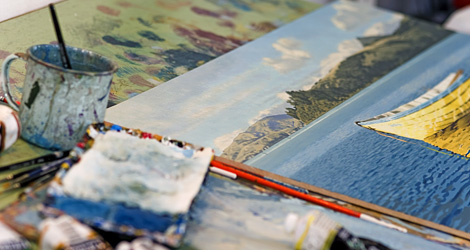
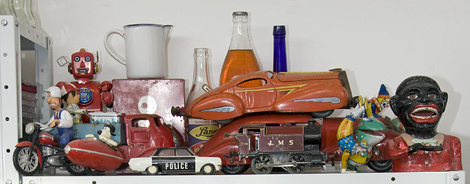
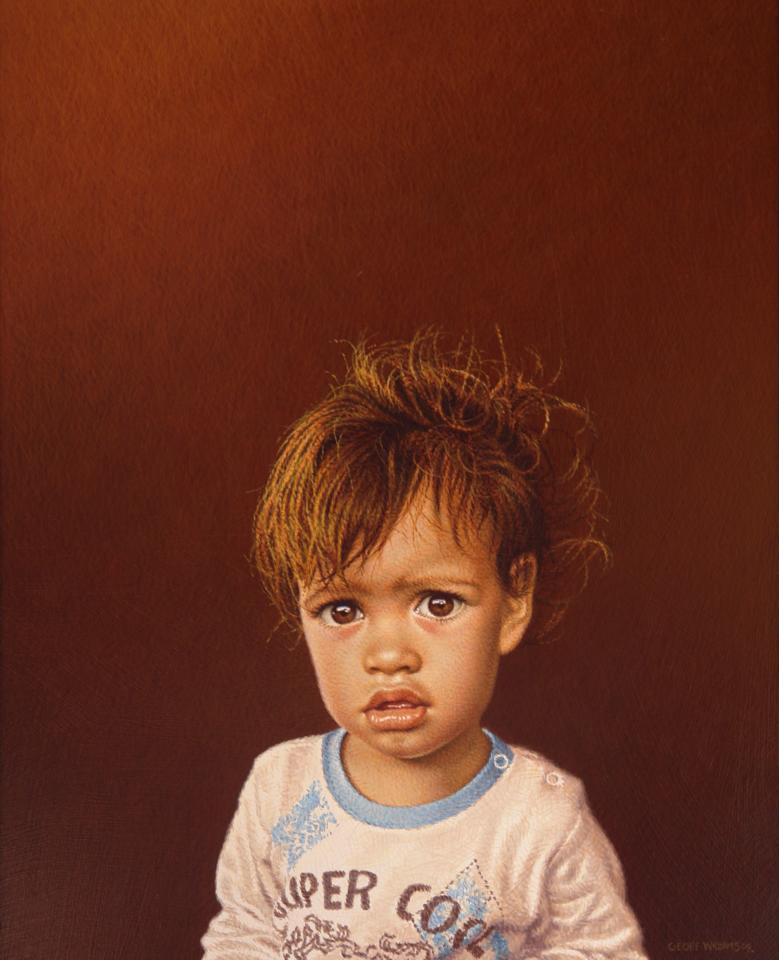
A strong narrative runs through much of my work, stopping short of telling the whole story, but creating a recognisable framework for viewers to tell their own stories.
Influences on my work vary. In my previous career as a sign writer, screen printer and graphic artist, I worked with many of the great corporate logos and often use them in my art today. The logos of Disney, Shell, Ford and Pepsi are used in my paintings to make a statement. I see the Coca cola logo, in particular, as the ultimate iconic design. Strong symbols like these transform my work into an advertisement for the subject of the painting, much like a TV or magazine advertisement without text.
The move from commercial sign writer to careers artist has been challenging and not without difficulty. To go from a fully supported, full-on employment in a team environment to self/employed artist working in isolation requires a certain amount of confidence and self-belief. Leaping into the unknown forces you to draw on inner strength and resources. You have to dig deep to maintain fortitude, discipline, routine and freshness of vision. You get to know yourself more fully and come to a greater understanding of the notion that the journey is more important than the destination.
Working in isolation sharpens you focus and allows you to develop all the facets of an artist’s life. The drawing and painting process and the collaboration between artists, model, and mentor in pursuit of a successful image provide satisfaction and fulfillment. A two-way process exists between an artist and his work. The more he values life, the more is work reflects that value.

PAINTING
My approach is “paint what you know”, light/dark, warm/cool, one third/two thirds. Paint with passion, compassion and respect.
I never compromise my technique for the sake of absolute realism. Once the paint is being applied the technique more or less dictates the final result. Viewed up close my paintings can appear quite coarse, yet at the same time, the enormous amount of work that has gone into the painting to produce the thin glazing and depth of colour is evident. Only with this technique can I achieve the desired outcome. While the work has a visual impact at a distance the technique compels closer viewing.
Initially, all my works were oils until it was discovered my colour blindness was a serious impediment. Paint with acrylics was the solution. Its fast drying qualities made possible frequent colour changes and facilitated colour experimentation.
Choosing the colours, I then proceed to build up paint with thousands of brush strokes and translucent colour glazes. Using acrylics also eliminates possible complications or deterioration one hundred years on. Whilst the technique can be incredibly tedious the rewards can be immense. Always there is the delicious excitement of finishing a painting, most often right up till the final glazes and varnishes are applied I never know the end result!
As it was with film, so it is in fine arts–most techniques emanate from
the commercial sector. Outstanding artists in my formative years have all been commercial artists at some point in their careers. Philip Markham worked for my father in the fifties and I got to know Steve Harris through a major client. They have uniquely different styles and techniques and distinctive qualities to which I aspire. The list of commercial artists graduating to fine arts is endless and to those of us who subscribe to common sense, logical.
DRAWING
An artist’s true abilities – or lack thereof – is exposed in one’s drawings. The essence of any great painting can be identified in the pre-study. Drawing is one of the purest forms of expression. To draw a nude on paper in pencil is one of the most sensual experiences an artist can have. The grain of fine art paper, when worked well, can produce immensely satisfying and beguiling results.

“Nude”
Occasionally during pre-study something quite magical happens–a drawing tabled for evaluation is complete. Further endeavour would be futile.
Most often drawings are the foundation for my paintings. In my late teens, the revelation that I was partially colour blind came as a shock. Fortunately, I was able to turn this to what I perceive as an advantage. Working with primary colours and a very limited palette painting became a “learn as you earn” exercise…
Sometimes my drawings have a life of their own. “Fade to Blue” and “Prefect” are drawings from my ’07 exhibition “Sojourn” that reflect family difficulties identified with lack of traction and mobility in a world that was calling out to me! The urge to travel was compelling. Fleeting glimpses of Europe were around every corner.
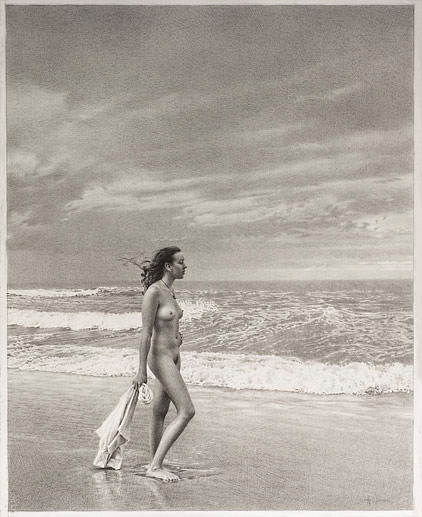
“Fade To Blue”
Like an old friend our beach, always there ,yet constantly changing–a favourite restaurant or the familiar car parked outside a mates place consoled me. A sojourn in the antipodes beckoned…
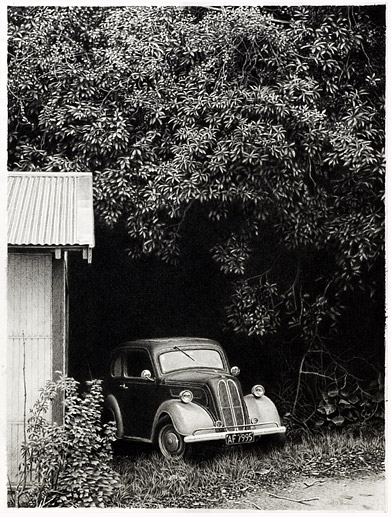
“Prefect”
INSPIRATION
On a day in 2003, I drove to Lake Tekapo in search of peace and found inspiration. I hadn’t painted a major landscape in three years following my daughter Tessa being diagnosed with cancer. My intention was to drive down Halden Road to one of my favourite spots to photograph the sun setting over the Dalgety Range in the heart of the Mackenzie Basin.
It couldn’t have been more perfect! Imagine, stepping out of a car after a three-and-a-half hour drive into a silent, serene landscape. I watched the bright orange sky merge to pinky salmon and finally a magenta-purple… then I saw my car for the first time… etched against a backdrop of lake, mountains and sublime colour–a relevant component in a perfect painting…

“Falcon down Haldon Road”
“Falcon down Haldon Road” was a strange, cathartic experience in an attempt to recapture a romance lost. Cars have featured in my paintings since the late nineties. As signwriters to the theatres, free access to such movies as Easy Rider, Two-Lane Blacktop, Vanishing Point and Zabriskie Point were influential. My mates and I regularly travelling at weekends to unspecified destinations in search of adventure… just like in the movies.
My relationship with the road is complex! Whilst there’s little left to discover there’s always that sense of adventure… around the next bend. These paintings are a reconstruction of my experience. Hopefully, through my work the viewers may rediscover their own experiences.

“Approaching 95”

